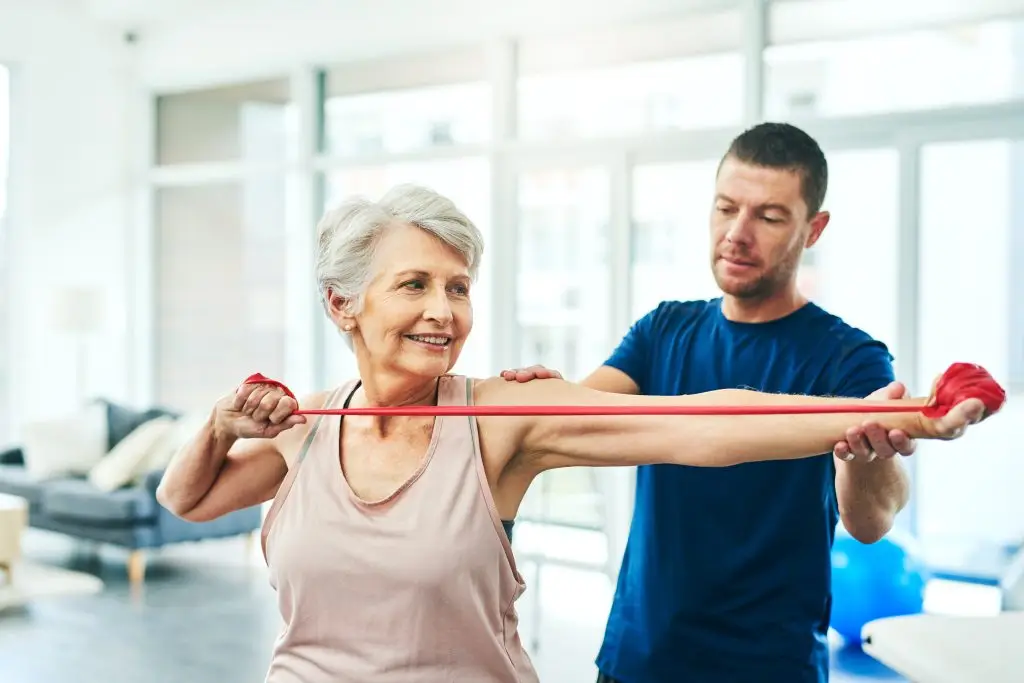Chronic or sudden shoulder pain is one of the most common joint pain symptoms people experience throughout their lives. Knowing when to stop activities and when to see a medical professional like a physical therapist is important when looking for immediate relief as well as long-term care.
Our physical therapists treat many different types and causes of shoulder pain on a one-on-one basis to ensure we create the right treatment plan, including stretches and exercises to relieve shoulder pain for each person’s unique condition.
Not every solution is right for every person experiencing shoulder pain, which is why we highly recommend scheduling an appointment to discuss your symptoms and medical history before trying at-home exercises or other treatments.
Causes of shoulder pain
The shoulder joint is a complex area of muscles, ligaments, and bones that can be affected in numerous ways depending on your lifestyle. Among the many causes of shoulder pain are:
- Rotator cuff injury
- Shoulder impingement
- Osteoarthritis
- Dislocation
- Tendinitis
- Bursitis
- Frozen shoulder syndrome
Each of these causes require sometimes vastly different techniques to relieve pain and restore movement to the shoulder. In many cases, physical therapy alone may be effective in treating symptoms and protecting the joint from future injury, but some people might benefit further from shoulder surgery after consultations with their doctors.
Symptoms of shoulder conditions
Most shoulder conditions cause pain, but each condition, from arthritis to rotator cuff tears, also present different symptoms that can help diagnose the problem and lead to effective treatment. Symptoms you should tell your doctor or physical therapist about include:
- Sharp pain
- Dull pain or aches
- Stiffness
- Weakness
- Numbness
- Reduced range of motion
Along with imaging tests like X-rays or MRIs, your medical provider will ask about your medical history and history with other types of pain, including neck and back pain.
How physical therapy can help relieve shoulder pain
Shoulder pain can be caused by a specific injury or event that leads to pain or be an ongoing symptom that a person has dealt with for years. In either case, physical therapy can often help by restoring full range of motion and strengthening the muscles of the shoulder.
Shoulder pain exercises
We strongly recommend talking to a physical therapist before attempting shoulder exercises or stretches at home. However, when done properly, many exercises have been shown to help people with shoulder injuries recover more quickly and have longer-term preventative benefits.
For the most accurate diagnosis and treatment plan, it’s best important to share all your symptoms and health history with a qualified physical therapist. Learn more about your options and what will help you get back to work and your normal life quickly by calling one of our offices near you or requesting an appointment online today.
